Canyons
A canyon is a deep, narrow valley with steep sides. They are typically formed by the erosion of a river or stream cutting through the rock over a long period of time. Canyons can also be formed by other natural forces such as glaciers, wind, or tectonic activity.
Formation of Canyons
There are several processes that can lead to the formation of canyons:
- River Erosion: Over time, the flow of a river can erode and carve through the rock, creating a deep and narrow canyon.
- Glacial Activity: Glaciers can carve out deep valleys, which may later become canyons as the glaciers retreat.
- Wind Erosion: Wind can gradually wear away the rock, forming canyons in arid regions.
- Tectonic Activity: The shifting of the Earth's crust can lead to the formation of fault-block canyons, where large blocks of rock are displaced vertically.
Characteristics of Canyons
Some key features and characteristics of canyons include:
- Steep Sides: Canyons have steep, often vertical walls that can be several hundred feet high.
- Rock Formations: Canyons often showcase a variety of rock formations, including layers of sedimentary rock and unique geological features.
- Flora and Fauna: Canyons provide unique habitats for a variety of plants and animals, adapted to the specific environmental conditions found within the canyon.
- Human History: Many canyons hold cultural and historical significance, with evidence of past human habitation and activities.
Study Guide for Canyons
Here are some key points to focus on when studying canyons:
- Describe the processes involved in the formation of canyons, including river erosion, glacial activity, wind erosion, and tectonic activity.
- Identify and describe the different types of canyons, such as river-cut canyons, box canyons, and slot canyons.
- Discuss the ecological importance of canyons and the diverse plant and animal life that can be found within them.
- Explore the cultural and historical significance of famous canyons around the world, such as the Grand Canyon in the United States.
- Examine the role of canyons as natural landmarks and popular tourist destinations, and the importance of preserving these natural wonders.
[Canyons] Related Worksheets and Study Guides:
.◂Science Worksheets and Study Guides Kindergarten. Weather
Coloring Worksheet Calendar
Calendar  Coloring Worksheet
Coloring Worksheet Calendar
Calendar  Coloring Worksheet
Coloring Worksheet Day and Night
Day and Night  Coloring Worksheet
Coloring Worksheet Day and Night
Day and Night  Coloring Worksheet
Coloring Worksheet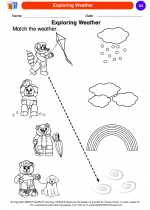 Exploring Weather
Exploring Weather  Coloring Worksheet
Coloring Worksheet Exploring Weather
Exploring Weather  Coloring Worksheet
Coloring Worksheet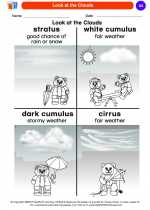 Look at the Clouds
Look at the Clouds  Coloring Worksheet
Coloring Worksheet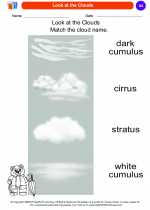 Look at the Clouds
Look at the Clouds  Coloring Worksheet
Coloring Worksheet Moon & Stars
Moon & Stars  Coloring Worksheet
Coloring Worksheet Moon & Stars
Moon & Stars  Coloring Worksheet
Coloring Worksheet Natural Events
Natural Events  Coloring Worksheet
Coloring Worksheet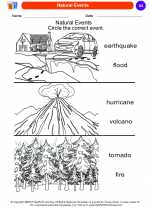 Natural Events
Natural Events  Coloring Worksheet
Coloring Worksheet Sun and Shadows
Sun and Shadows  Coloring Worksheet
Coloring Worksheet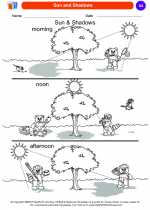 Sun and Shadows
Sun and Shadows  Coloring Worksheet
Coloring Worksheet The Seasons
The Seasons  Coloring Worksheet
Coloring Worksheet The Seasons
The Seasons  Coloring Worksheet
Coloring Worksheet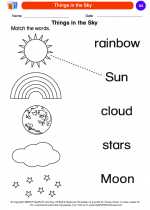 Things in the Sky
Things in the Sky  Coloring Worksheet
Coloring Worksheet Things in the Sky
Things in the Sky  Coloring Worksheet
Coloring Worksheet Weather Tools
Weather Tools  Coloring Worksheet
Coloring Worksheet Weather Tools
Weather Tools 

 Coloring Worksheet
Coloring Worksheet
 Coloring Worksheet
Coloring Worksheet
 Coloring Worksheet
Coloring Worksheet
 Coloring Worksheet
Coloring Worksheet
 Coloring Worksheet
Coloring Worksheet
 Coloring Worksheet
Coloring Worksheet
 Coloring Worksheet
Coloring Worksheet
 Coloring Worksheet
Coloring Worksheet
 Coloring Worksheet
Coloring Worksheet
 Coloring Worksheet
Coloring Worksheet
 Coloring Worksheet
Coloring Worksheet
 Coloring Worksheet
Coloring Worksheet
 Coloring Worksheet
Coloring Worksheet
 Coloring Worksheet
Coloring Worksheet
 Coloring Worksheet
Coloring Worksheet
 Coloring Worksheet
Coloring Worksheet
 Coloring Worksheet
Coloring Worksheet
 Coloring Worksheet
Coloring Worksheet
 Coloring Worksheet
Coloring Worksheet

The resources above cover the following skills:
EARTH AND SPACE SCIENCE (NGSS)
Earth’s Systems
Students who demonstrate understanding can:
Use and share observations of local weather conditions to describe patterns over time.